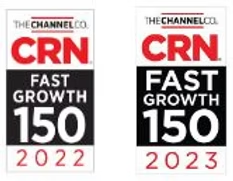Many organizations are reevaluating their infrastructure strategy. The rising costs, evolving licensing models, and growing need for flexibility are prompting IT teams to consider VMware alternatives that better support scalability, modernization, and cost optimization.
One popular choice is Microsoft’s Azure VMware Solution (AVS). This managed service allows businesses to move their existing VMware workloads directly to Azure without re-architecting, retraining, or disrupting operations. It delivers the best of both worlds, allowing you to retain your VMware tools while unlocking the capabilities of the Azure cloud.
Ready to migrate to a VMware alternative?
Now’s the perfect time to make the switch. Microsoft offers a limited-time promotion to help cover migration costs for businesses moving from VMware to AVS. Reach out to 5 Point Technology for all the details.
What Is Azure VMware Solution (AVS) & Why It’s a Top VMware Alternative
Azure VMware Solution (AVS) has become a go-to option for many organizations looking for the best VMware alternative. It blends the familiarity of VMware with the scalability and services of Microsoft Azure, offering a path forward that minimizes disruption.
What Is AVS?
Azure VMware Solution is a Microsoft-managed service that allows you to run VMware workloads natively within Azure. It’s built on the same technologies you’re already using:
- vSphere for virtualization
- vSAN for storage
- NSX-T for networking
- HCX for workload mobility
The result is a fully compatible platform that mirrors your existing environment. There’s no need to refactor applications or retrain your team. You simply lift and shift your VMware workloads to a dedicated AVS instance in the cloud.
Why AVS Is Considered a Strong VMware Alternative
Organizations choose AVS as a VMware alternative for several strategic reasons:
- Shift from CapEx to OpEx: Reduce upfront costs and transition to a pay-as-you-go cloud consumption model.
- Avoid vendor lock-in: AVS gives you broader flexibility to access Azure-native tools and services alongside your VMware stack.
- Preserve your VMware investment: You retain familiar tools, workflows, and configurations while modernizing infrastructure.
- Accelerate cloud adoption: AVS removes many barriers to cloud migration by eliminating the need to re-architect applications.
AVS is ideal for businesses seeking the best VMware alternative because it offers immediate compatibility, long-term scalability, and seamless integration with Azure’s broader ecosystem.
Why Businesses Are Exploring Alternatives to VMware
Across industries, IT leaders are reevaluating their infrastructure strategy, and many are landing on the same conclusion: it’s time to look for an alternative to VMware. There isn’t just a single factor driving this shift, but a combination of business, financial, and operational pressures that make the status quo harder to sustain.
For one, cost is a growing concern. VMware’s evolving licensing models and rising fees force many businesses to justify whether their existing setup is still the most cost-effective. As cloud adoption accelerates, companies are also rethinking their long-term IT roadmap. They’re asking whether traditional virtualization platforms can keep pace with the agility and scale modern enterprises demand.
That’s where the value of VMware alternatives comes into play. Organizations want cloud-native flexibility without the burden of re-architecting everything from scratch. They want to modernize, but they don’t want to lose their investment in their VMware stack or retrain their entire team overnight.
Compared to other alternatives to VMware, Azure VMware Solution (AVS) offers a more practical path forward. It preserves your existing VMware tools and processes, avoids the complexity of greenfield cloud deployments, and makes it possible to modernize on your timeline. For many, it bridges the infrastructure they trust and the future they need.
Step-by-Step: How to Migrate VMware to Azure
A thoughtful plan makes all the difference when it comes to a successful VMware migration. You can move to Azure without disruption or data loss with the right tools and a phased approach. Here’s how to migrate VMware to Azure using Azure VMware Solution (AVS).
Step 1: Assess Your On-Prem Environment
Before making any moves, clearly understand what you’re working with. Use Azure Migrate to discover, assess, and plan migrating your VMware workloads to Azure.1 This centralized tool maps dependencies, evaluates performance, and recommends optimal VM sizes for Azure, giving you a clear blueprint for a successful migration. It also flags any compatibility concerns beforehand so you can plan proactively.
Step 2: Deploy Your Azure VMware Solution
Next, deploy your AVS private cloud. Choose the Azure region closest to your user base and provision your environment directly from the Azure portal. You’ll also need to establish secure connectivity between your on-premises data center and your AVS environment, typically via ExpressRoute or a VPN gateway.
Step 3: Prepare for Workload Mobility with HCX
VMware HCX is the bridge between your existing infrastructure and Azure. After installing and configuring HCX, segment your migration into manageable waves. Start with test workloads or low-priority systems to validate the environment and adjust as needed.
Step 4: Migrate VMware to Azure
With your groundwork in place, you’re ready to execute the migration. HCX offers several methods for transferring workloads, including live vMotion for minimal downtime or replication-based migrations for more controlled rollouts. Throughout the process, monitor performance metrics, validate access controls, and document the results to ensure a smooth transition.
Step 5: Optimize & Scale
Post-migration is the perfect time to fine-tune. Enable Azure Monitor to gain visibility into workloads, apply governance policies for security and cost control, and begin expanding your environment with Azure-native services. This might include cloud backups, advanced analytics, AI tools, or disaster recovery solutions, whatever best aligns with your future IT goals.
Quick Checklist: Migrating VMware to Azure with AVS
Not every IT team has time to parse through lengthy guides. This checklist is built for clarity and speed, which is ideal for stakeholders who want a high-level view of what’s involved in a successful VMware migration to Azure. Use it to guide internal discussions, assign tasks, or validate your migration plan.
✔ Inventory your VMware workloads with Azure Migrate
Understand what you’re running, how it’s performing, and how to size your cloud environment correctly.
✔ Deploy your AVS private cloud
Provision a dedicated environment inside Azure that mirrors your current VMware stack, with no refactoring required.
✔ Establish hybrid connectivity
Use ExpressRoute or VPN to create a secure connection between your on-prem data center and Azure.
✔ Set up VMware HCX
Enable seamless mobility of workloads with tools for live migrations, bulk transfers, and replication.
✔ Execute phased migrations
Move workloads in waves, starting with low-risk systems to validate the process and minimize disruption.
✔ Validate and monitor post-migration
Check performance, ensure user access, and use Azure Monitor for visibility across your new environment.
✔ Optimize for cost, performance, and security
Leverage Azure-native tools to fine-tune operations and unlock long-term value from your cloud investment.
AVS Migration Tools That Make It All Possible
Migrating to the cloud doesn’t have to mean starting from scratch. Microsoft provides purpose-built tools to help businesses migrate VMware to Azure with confidence. Here’s a closer look at the three tools that form the foundation of any successful VMware migration using AVS.
Azure Migrate
Think of Azure Migrate as your migration command center. It provides centralized visibility and planning for your move to Azure. With this tool, you can:
- Discover and inventory your VMware workloads
- Assess performance and usage patterns
- Right-size virtual machines for Azure
- Model migration costs based on usage and licensing
Azure Migrate gives you the data and insights to plan strategically.
VMware HCX
VMware HCX bridges your on-premises environment and Azure. It facilitates secure, low-downtime migrations with features that include:
- Live vMotion migration for real-time workload transfers
- Bulk migration with replication-based options
- Integrated security, encryption, and error handling
- Network extension between your on-prem and cloud workloads
VMwareHCX turns your plan into action smoothly and securely.
Azure Hybrid Benefit
Licensing can be one of the most significant cost drivers in a cloud migration. Azure Hybrid Benefit helps lower that barrier. This program lets you reuse existing Windows Server and SQL Server licenses in the cloud, which can lead to significant cost savings.
Combined, these three tools eliminate much of the complexity around moving to Azure. They help streamline migration, control costs, and set you up for success in the cloud.
Key Considerations Before Migrating VMware to Azure
Even with the right tools and a solid roadmap, a successful VMware migration still depends on thoughtful preparation. Before moving any workloads, ensure your organization has accounted for these foundational elements.
Security & Compliance
Security can’t be an afterthought in cloud migration. Review your organization’s identity and access management practices and confirm that encryption standards and compliance frameworks align with Azure policies. This includes setting role-based access controls (RBAC), enabling multifactor authentication, and validating that you meet data sovereignty requirements in your chosen Azure region.
Cost Planning
Cloud migrations introduce a cost model different from traditional infrastructure. Use tools like Azure Migrate and the Azure Pricing Calculator to estimate your spend. Leverage Azure Hybrid Benefit and Reserved Instances to reduce long-term costs. It’s also smart to align budgeting with operational usage so your finance team has complete visibility into monthly, quarterly, and annual projections.
Cloud Readiness
Beyond the tech, your team needs to be ready for the operational shift. Evaluate your team’s cloud skills and identify where upskilling may be required. Consider the impact on helpdesk procedures, change management workflows, and post-migration monitoring. The more aligned your people and processes are to the cloud, the smoother your transition will be.
Planning for these areas upfront helps ensure your VMware migration is smooth, cost-effective, and sustainable over the long term.
Why Work with 5 Point Technology for Your Migration Strategy
Navigating a VMware migration is no small task. There are many moving parts, from assessing your environment to optimizing your post-migration setup. That’s why working with a knowledgeable partner can make all the difference.
At 5 Point Technology, our team includes Microsoft and VMware-certified experts with real-world experience helping organizations identify the best VMware alternative for their business. We’ve guided companies through every phase of the migration journey: discovery, design, deployment, and optimization.
We don’t just move workloads. We help you build a smarter, more scalable infrastructure strategy that aligns with your goals.
Whether you’re looking to reduce cost, improve agility, or modernize with minimal disruption, we bring the tools, expertise, and support you need to succeed in the cloud.
Looking for the Best VMware Alternative? AVS Makes Migration Easy
Azure VMware Solution offers a future-proof path forward. It preserves the VMware environment your team already knows while unlocking Azure’s innovation potential. If you’re evaluating alternatives to VMware or are ready to migrate VMware to Azure, we’re here to help.
Ready to move to the cloud without giving up the tools your team already knows?
Let 5 Point Technology help you migrate VMware to Azure confidently and cost-effectively. Reach out today to start your strategy session.
Sources




